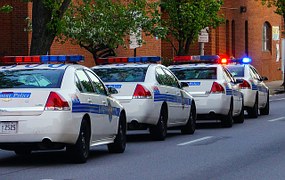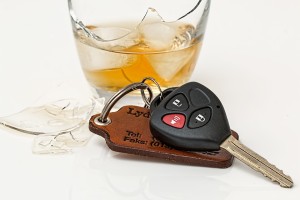 In 2010 Maryland’s first casino opened in Cecil County, a location picked due to its proximity to gambling establishments in nearby Delaware and New Jersey. Lawmakers and citizens were growing tired of losing out on millions of dollars in tax revenue and thousands of jobs to neighboring states, and the response was legalizing casino gambling. Since the Hollywood Casino of Perryville opened roughly 8 years ago five more casinos have opened their doors, with the newest being the billion-dollar MGM National Harbor Casino in Prince George’s County that opened at the end of 2016. The casinos are spread pretty evenly across the state from the Rocky Gap Casino in Allegany County to Ocean Downs on the Eastern Shore. The Horseshoe in Baltimore and Maryland Live in Anne Arundel County are the closest together distance wise, but draw from a large customer base and have no trouble keeping the profits flowing. Average monthly revenue from the casinos is approaching $150 million. The six casinos draw hundreds of thousands of visitors each year, and the positive economic impacts have been undeniable. While the tax revenue and job creation have been a huge positive for the state there is also a dark side to the all the bright lights and jackpot payouts. Six new casinos opening in a little over five years brings an increased risk for gambling addiction. Marylanders once had to board a plane to Vegas or drive 3 hours in traffic to play table games, but now it’s hard to find a place in the state that is more than an hour drive away from a casino.
In 2010 Maryland’s first casino opened in Cecil County, a location picked due to its proximity to gambling establishments in nearby Delaware and New Jersey. Lawmakers and citizens were growing tired of losing out on millions of dollars in tax revenue and thousands of jobs to neighboring states, and the response was legalizing casino gambling. Since the Hollywood Casino of Perryville opened roughly 8 years ago five more casinos have opened their doors, with the newest being the billion-dollar MGM National Harbor Casino in Prince George’s County that opened at the end of 2016. The casinos are spread pretty evenly across the state from the Rocky Gap Casino in Allegany County to Ocean Downs on the Eastern Shore. The Horseshoe in Baltimore and Maryland Live in Anne Arundel County are the closest together distance wise, but draw from a large customer base and have no trouble keeping the profits flowing. Average monthly revenue from the casinos is approaching $150 million. The six casinos draw hundreds of thousands of visitors each year, and the positive economic impacts have been undeniable. While the tax revenue and job creation have been a huge positive for the state there is also a dark side to the all the bright lights and jackpot payouts. Six new casinos opening in a little over five years brings an increased risk for gambling addiction. Marylanders once had to board a plane to Vegas or drive 3 hours in traffic to play table games, but now it’s hard to find a place in the state that is more than an hour drive away from a casino.
Upon legalizing casinos lawmakers also created provisions to combat gambling addiction including educational resources and 24 hour hotlines, which are both helpful tools for those who desire help. On the other hand these resources lack teeth for players and their families that are trying to stop. For those that require additional help lawmakers and the gaming commission created the voluntary exclusion program or VEP, which allows a person to voluntarily agree to refrain from entering and playing at any Maryland casino. Anyone can enter the program with the caveat that the application has to be accompanied by an in person interview. Spouses, friends and family members may try to convince a person to enter the program but they cannot enter it on their behalf. The reason the commission requires a thorough application process and an in person interview is because the consequences for violating the pact to refrain from entering a casino are criminal. A person enrolled in the voluntary exclusion program may be charged with criminal trespass upon entering a Maryland casino, and odds are that this will happen regardless of whether a chip is played. Casinos take the exclusion program very seriously, and they have to in order to remain in the good graces of lawmakers. Issuing a large number of criminal trespass citations ensures the image of compliance, so a person who is caught will almost certainly not be able to talk their way out charges. While a person may take themselves out of the voluntary exclusion program after two years this does not happen automatically. You have to apply to take yourself off, and the commission must approve this request before you can reenter or play again. It is not a defense that 2 or more years have passed since acceptance to the program.
The casinos can easily locate an excluded person through face recognition technology, credit card alerts and players club card alerts so do not be surprised to see security walk up on you within minutes of entering the facility. Generally casino security will escort a potential offender off the gaming floor to a back room, where a local police officer will show up toting a citation booklet. Offenders are then issued a citation and escorted off the property. Criminal trespass carries a maximum sentence of 90 days in jail, though most people that receive these citations are first time offenders and realistically do not face a lengthy jail sentence upon conviction. On the other hand, the potential to receive a permanent criminal conviction looms large for anyone who receives a trespass citation, and this result could have devastating effects on the ability to maintain employment, professional licenses and security clearances. If handled properly casino trespass citations could be nothing more than an inconvenience so it is important to contact an attorney who has experience handling these cases. An attorney can attempt to work out a favorable resolution in advance of the court date, which will not only limit exposure to criminal sanctions but also eliminate the stressful uncertainty of a court appearance.
 Criminal Defense Lawyer Blog
Criminal Defense Lawyer Blog










